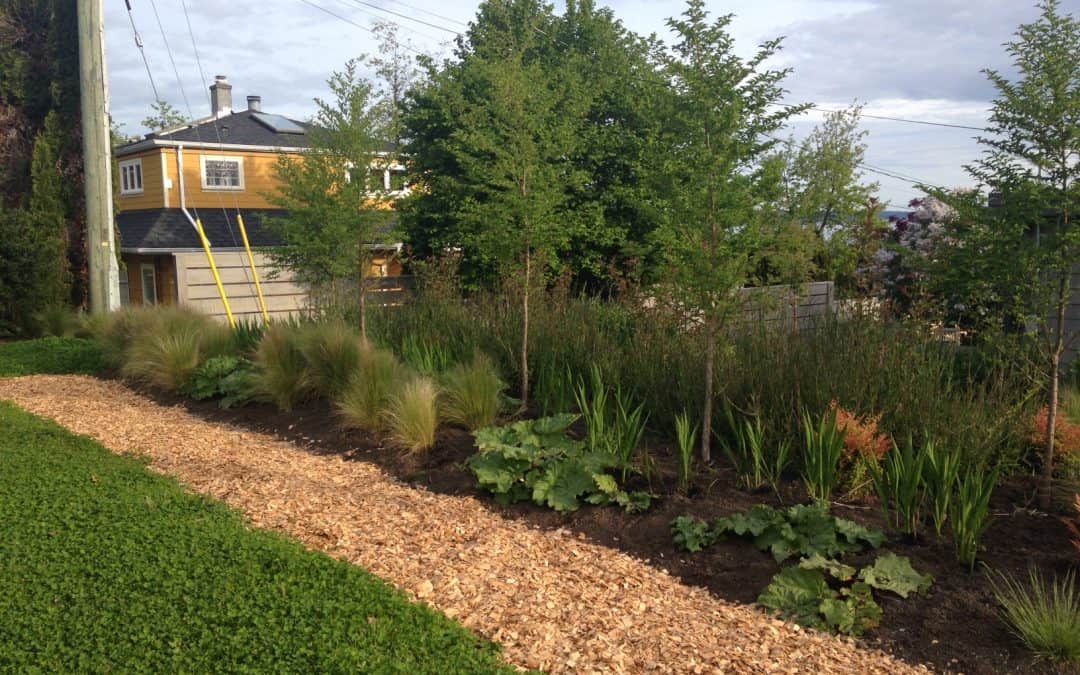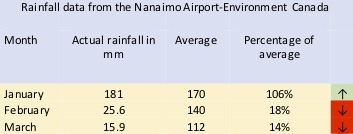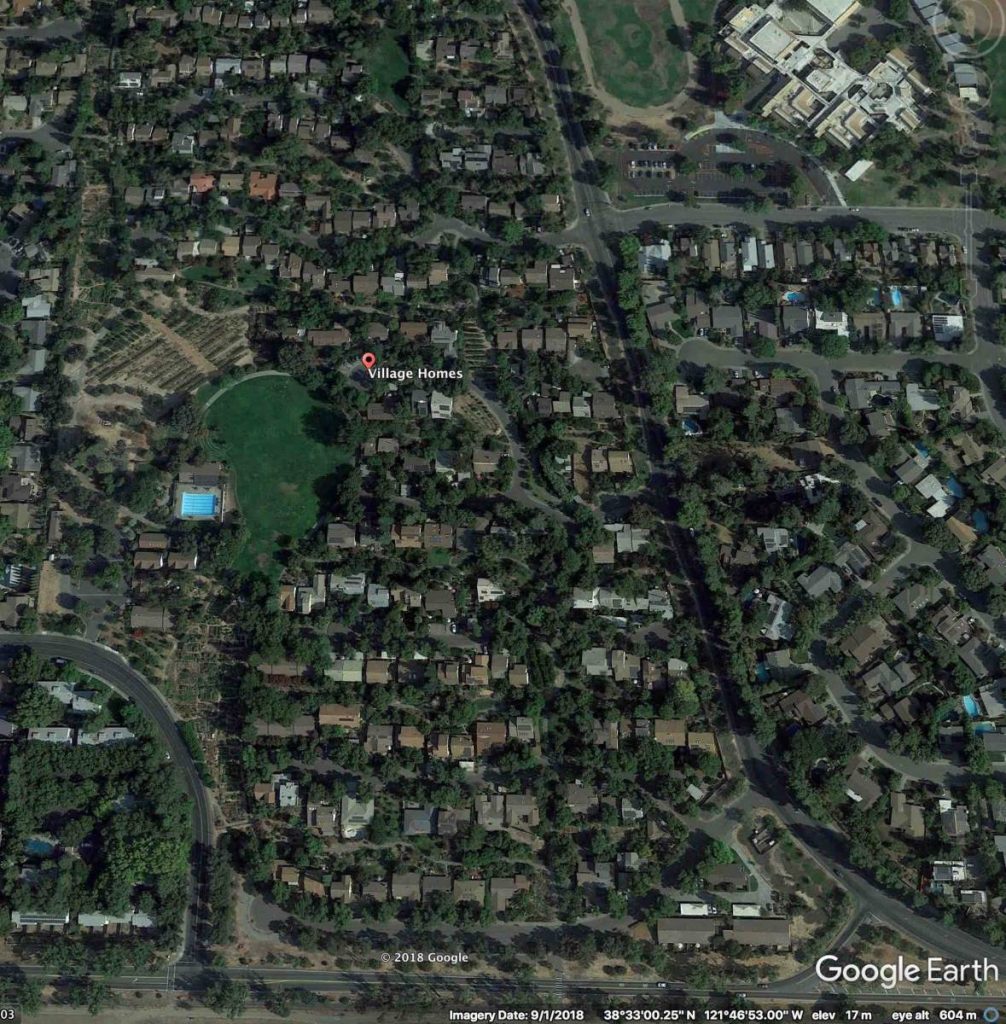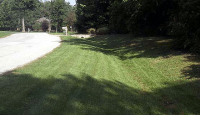It’s looking dry out there.
We’re rolling into spring on the back of a colder and drier than average winter for those on the east coast of Vancouver Island. While I’m writing this post, the sun is shining, and it’s going to be another lovely day, but this comes as a double edge sword. As you’ll note below our average rainfall that has fallen over the past two months is dramatically below our average. While we hope that this is not a trend for this year, we’ve taken steps to increase our landscapes resilience and lessen the effects of a drought.
Over the next few blog posts, I will lay out some of the strategies that we recommend to our clients and have used on our own property. These strategies help increase the landscapes resilience and decrease the effects of drought. So what exactly is drought proofing?
Here’s a definition we found:
Resistant to drought
Okay we then look at drought
Definition of drought: A period of unusually low rainfall, longer and more severe than a dry spell
Source: https://en.wiktionary.org/wiki/drought
By drought proofing, we are trying to lessen the effects of prolonged dry conditions. When This takes us back to water and how we typically deal with water in our urban, acreage and farm settings. If we look at outdoor water usage and our average rainfall the peaks of each of these are pretty much six months apart, in other words when the rain comes, it’s often during our dormant season (winter).
The modern housing development mindset is to pave and drain away any excess water that is then sent off to nearby streams, lakes, rivers or other water bodies, as it’s seen as a liability during out abundant winter rainfall months.
During the growing season, our average rainfall drops, and we need to supplement most landscapes by pumping water onto our landscapes from either our wells or a community water system. We don’t have a lack of water in this part of the world, but instead, we tend not to manage this as well as we could. There are several stellar examples of small communities which have placed priorities on water both from a drought and a flood perspective, and one such place is a small town in California called Davis.
Village homes (in Davis) is 225 homes and 20 apartment units that now are the Village Homes community use solar panels for heating, and they are oriented around common areas at the rear of the buildings, rather than around the street at the front. All roads are oriented east-west, with all lots positioned north-south. This feature has become standard practice in Davis and elsewhere since it enables homes with passive solar designs to make full use of the sun’s energy throughout the year. The development also uses natural drainage, called bioswales, to collect water to irrigate the common areas and support the cultivation of edible foods, such as nut and fruit trees and vegetables for consumption by residents, without incurring the cost of using treated municipal water. Source: https://en.wikipedia.org/wiki/Village_Homes
This example was so successful that it was rare to find a home for sale within this development; it is also able to handle drought and flood events much better than the surrounding areas.
We can take some examples from this development and apply them to our context. One of the most exciting cases that I see is the use of passive rainwater harvesting where water is directed from the road, onto a gently sloped swale to which helps to infiltrate the water instead of leaving the site in a pipe.
We can look at our landscapes and see many possibilities of harvesting our rainwater, you don’t have to go far to find an impervious hard surface that is shedding water, in most cases to a drain which then leaves your site.
Your roof is a great start, and the average North American roof is 2000 sq ft (185 sqm), we receive an average of 42.9″ or 1065 mm per year (in my area) which would yield around 52,000+ gallons of water. You don’t have to store your rainwater in a cistern.
You can look to your soil as a water storage structure. By passively harvesting rainwater we can slow the passage of water through our site which will help the rainwater infiltrate back into the ground, this takes pressure off our waterways and helps reduce our need for supplemental water. We will dive deeper into some other passive rainwater harvesting techiques in upcoming posts.
Next blog will look at soils and how they can help us store more water and turn our landscapes health around.





